Posted by · Leave a Comment
It’s been four weeks for the cherry wine and it’s time to rack, or siphon off, the liquid from the must (this is the fruit “by-product” which has settled to the bottom of the carboy).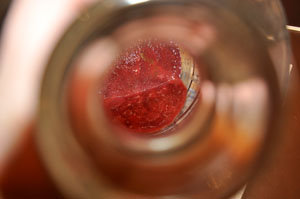
I lifted the five-gallon carboy to the kitchen counter the night before so the must would have a chance to rest undisturbed, overnight, and settle once again. {You need the full vessel higher than the empty vessel to which you will transfer the wine).
Next, be sure your equipment is clean and sterile for the transfer.
Once the siphon is going, it will likely empty the carboy in one continuous, steady draw. 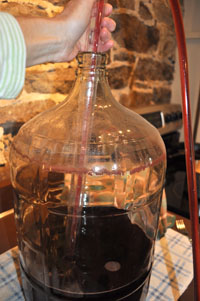 Make sure the intake is not resting in the must. Remember, the object is to capture only “clean” wine in this rack—leave behind as many particles as possible.
Make sure the intake is not resting in the must. Remember, the object is to capture only “clean” wine in this rack—leave behind as many particles as possible.
You will probably see a little bubbling activity in this transfer. There will still be yeast present and the agitation will activate it.
Once the transfer is complete, get your fermentation lock on. One fruit gnat carries enough bacteria to ruin the batch (amazing, right?). Find a place for your carboy to call home for the next few months where it’ll be out of the way and the temperature will be somewhat regulated.
Bottling for this batch of cherry wine will occur close to the holidays!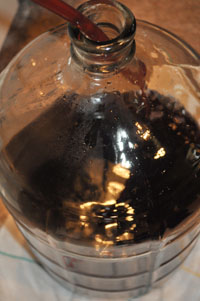
Comments Off on Cherry Wine – The Process Continues

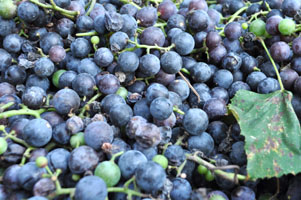
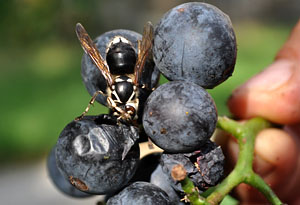 About two minutes into the task, I saw my first bald-faced hornet. And then another. And then another. In and around the grapes and vines with their heads tucked into the fruit and tails a’waggin’.
About two minutes into the task, I saw my first bald-faced hornet. And then another. And then another. In and around the grapes and vines with their heads tucked into the fruit and tails a’waggin’.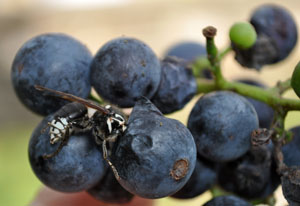
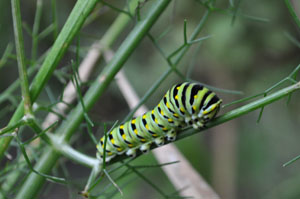 So there I was whacking away at the stalks, when I spotted this beautiful caterpillar balanced on a lower stem. I paused, momentarily, because the stripes were so unique. When I spotted the second one
So there I was whacking away at the stalks, when I spotted this beautiful caterpillar balanced on a lower stem. I paused, momentarily, because the stripes were so unique. When I spotted the second one 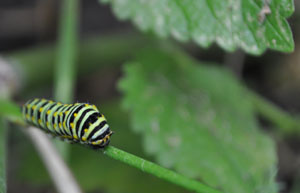 on the stalks, I put down my clippers. What was the connection between these caterpillars and this fennel plant?
on the stalks, I put down my clippers. What was the connection between these caterpillars and this fennel plant? 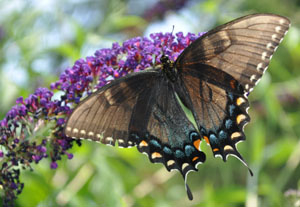 The caterpillars on the fennel plant are Eastern Black Swallowtails and feed on fennel, parsley, carrot, and dill. Wow. What a delicate balance?! I took this picture of a Black Swallowtail in my flower garden two months ago—not realizing how beneficial it would be to have a fennel plant a mere 20 feet away. I think I can learn to love fennel again—because I sure love these butterflies.
The caterpillars on the fennel plant are Eastern Black Swallowtails and feed on fennel, parsley, carrot, and dill. Wow. What a delicate balance?! I took this picture of a Black Swallowtail in my flower garden two months ago—not realizing how beneficial it would be to have a fennel plant a mere 20 feet away. I think I can learn to love fennel again—because I sure love these butterflies.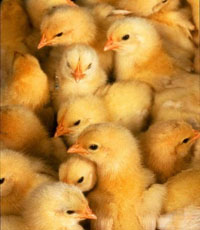 A trip to a hatchery! I’ve wondered about these magical places ever since our after-hours pick up of our first box of day-old chicks from the local post office (and I bet you thought chicks came from hens).
A trip to a hatchery! I’ve wondered about these magical places ever since our after-hours pick up of our first box of day-old chicks from the local post office (and I bet you thought chicks came from hens).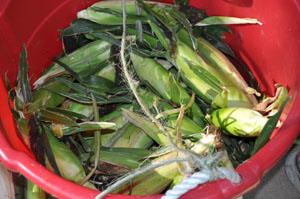 We bade a fond farewell to our sweet corn a week ago.
We bade a fond farewell to our sweet corn a week ago.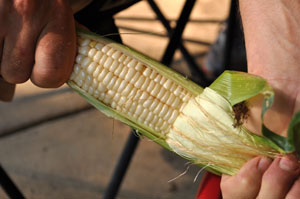 My husband always plants the old standby “Silver Queen.” It’s been a popular variety with farmers for decades and has a maturity of 92 days. This year, we also planted “Bodacious” which has a 75-day maturity and “Delectable” with an 84-day maturity. The different days to maturity as well as staggered plantings, allow for a sweet corn harvest over several summer weeks if you’re a savvy planter!
My husband always plants the old standby “Silver Queen.” It’s been a popular variety with farmers for decades and has a maturity of 92 days. This year, we also planted “Bodacious” which has a 75-day maturity and “Delectable” with an 84-day maturity. The different days to maturity as well as staggered plantings, allow for a sweet corn harvest over several summer weeks if you’re a savvy planter!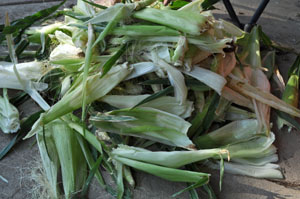 right off the cob!
right off the cob! I’ll tell you: make one and a half quarts of grape juice and two batches of grape jelly, that’s what.
I’ll tell you: make one and a half quarts of grape juice and two batches of grape jelly, that’s what.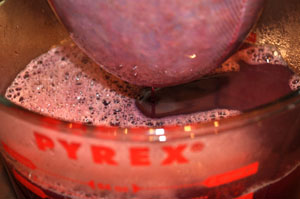 started canning, I was drawn toward the jams because it was just a matter of squishing everything up and adding sugar and pectin. I was so proud! But, then, came the turned-up noses of two toddlers to the texture of the fruit and jelly—who knew? The following year, I relented and began making jelly. WHAT A SNAP?! Why was I intimidated? What was I thinking?
started canning, I was drawn toward the jams because it was just a matter of squishing everything up and adding sugar and pectin. I was so proud! But, then, came the turned-up noses of two toddlers to the texture of the fruit and jelly—who knew? The following year, I relented and began making jelly. WHAT A SNAP?! Why was I intimidated? What was I thinking? 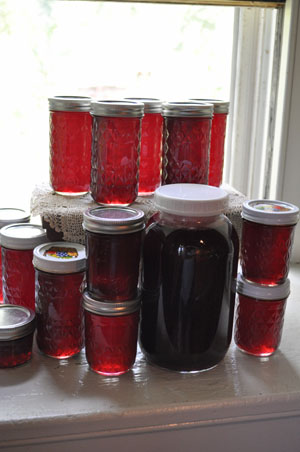 Jelly is now my preferred route of fruit preservation. I usually drip the mashed fruit overnight to collect the juice and then make the jelly, first-thing, the next morning. However, it seemed the grapes were pouring their juice through the jelly bag yesterday so I was able to make it the same day… make two batches… and collect more than a quart of juice.
Jelly is now my preferred route of fruit preservation. I usually drip the mashed fruit overnight to collect the juice and then make the jelly, first-thing, the next morning. However, it seemed the grapes were pouring their juice through the jelly bag yesterday so I was able to make it the same day… make two batches… and collect more than a quart of juice.
